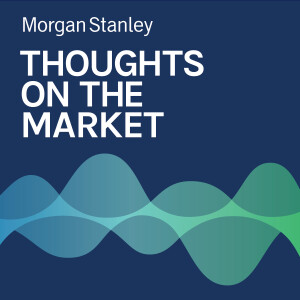
Our head of Corporate Credit Research, Andrew Sheets, notes areas of uncertainty in the credit, equity and macro landscapes that are worth tracking as we move into the fall.
----- Transcript -----
Welcome to Thoughts on the Market. I'm Andrew Sheets, head of Corporate Credit Research at Morgan Stanley. Along with my colleagues bringing you a variety of perspectives, today I'll be talking about three risks we’re focused on for the third quarter.
It's Friday, July 26th at 2pm in London.
We like credit. But there are certainly risks we’re watching. I’d like to discuss three that are top of mind.
The first is probably the mildest. Looking back over the last 35 years, August and September have historically been tougher months for riskier assets like stocks and corporate bonds. US High Yield bonds, for example, lose about 1 per cent relative to safer government bonds over August-September. That’s hardly a cataclysm, but it still represents the worst two-month stretch of any point of the year. And so all-else-equal, treading a little more cautiously in credit over the next two months has, from a seasonal perspective, made sense.
The second risk is probably the most topical. Equity markets, especially US equity markets, are seeing major shifts in which stocks are doing well. Since July 8th, the Nasdaq 100, an index dominated by larger high-quality, often Technology companies, is down over 7 per cent. The Russell 2000, a different index representing smaller, often lower quality companies, is up over 11 per cent. So ask somebody – ‘How is the market?’ – and their answer is probably going to differ based on which market they’re currently in. This so-called rotation in what’s outperforming in the equity market is a risk, as Technology and large-cap equities have outperformed for more than a decade, meaning that they tend to be more widely held. But for credit, we think this risk is pretty modest.
The weakness in these Large, Technology companies is having such a large impact because they make up so much of the market – roughly 40 per cent of the S&P 500 index. But those same sectors are only 6 per cent of the Investment grade credit market, which is weighted differently by the amount of debt somebody is issued. Meanwhile, Banks have been one of the best performing sectors of the stock market. And would you believe it? They are one of the largest sectors of credit, representing over 20 per cent of the US Investment Grade index. Put a slightly different way, when thinking about the Credit market, the average stock is going to map much more closely to what’s in our indices than, say, a market-weighted index.
The third risk on our minds is the most serious: that economic data ends up being much weaker than we at Morgan Stanley expect. Yes, weaker data could lead the Fed and the ECB to make more interest rate cuts. But history suggests this is usually a bad bargain. When the Fed needs to cut a lot as growth weakens, it is often acting too late. And Credit consistently underperforms.
We do worry that the Fed is a bit too confident that it will be able to see softness coming, given the lag that exists between when it cuts rates and the impact on the economy. We also think interest rates are probably higher than they need to be, given that inflation is rapidly falling toward the Fed’s target. But for now, the US Economy is holding up, growing at an impressive 2.8 per cent rate in the second quarter in data announced this week. Good data is good news for credit, in our view. Weaker data would make us worried.
Thanks for listening. If you enjoy the show, please leave us a review wherever you listen and share Thoughts on the Market with a friend or colleague today.
More Episodes
 2024-11-08
2024-11-08
 2024-11-07
2024-11-07
 2024-11-05
2024-11-05
 2024-11-01
2024-11-01
 2024-10-31
2024-10-31
 2024-10-30
2024-10-30
 2024-10-29
2024-10-29
 2024-10-28
2024-10-28
 2024-10-25
2024-10-25
 2024-10-23
2024-10-23
 2024-10-22
2024-10-22
 2024-10-15
2024-10-15
 2024-10-14
2024-10-14
Create your
podcast in
minutes
- Full-featured podcast site
- Unlimited storage and bandwidth
- Comprehensive podcast stats
- Distribute to Apple Podcasts, Spotify, and more
- Make money with your podcast
It is Free
- Privacy Policy
- Cookie Policy
- Terms of Use
- Consent Preferences
- Copyright © 2015-2024 Podbean.com





